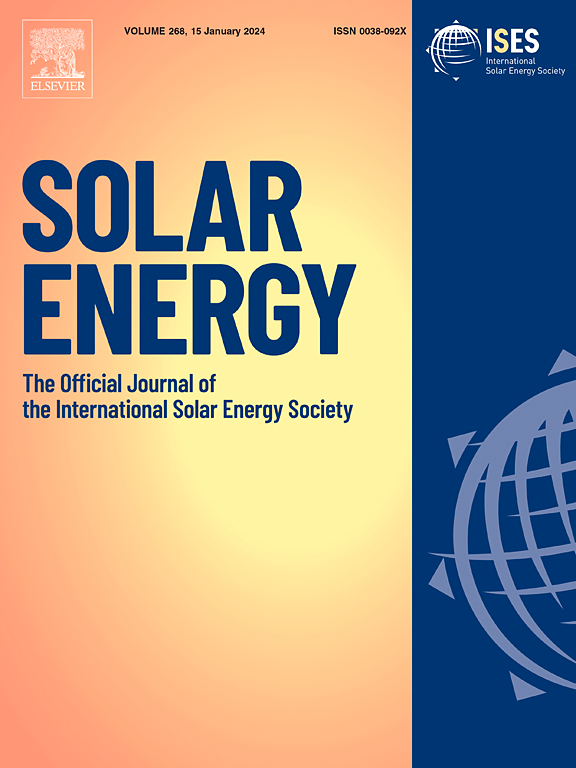Solid-solid PCM-based tree-shaped thermal energy storage system for solar cooling application
IF 6
2区 工程技术
Q2 ENERGY & FUELS
引用次数: 0
Abstract
This manuscript presents a comprehensive analysis of a solar cooling system, integrating a latent heat thermal energy storage (LHTES) with an absorption chiller, alongside a solar collectors’ field. The LHTES employs solid–solid phase change material (PCM), while the solar collectors belong to the parabolic type. Real-case boundary conditions are derived through the thorough examination of the overall system, encompassing user demands and operational dynamics. In particular, the study evaluates two distinct building scenarios, i.e., modern, and outdated buildings, considering both existing and new structures, to assess the flexibility and adaptability of the LHTES system to varying cooling demands. The preliminary system analysis gives a set of boundary conditions for the subsequent storage sizing and numerical simulations. Building upon these insights, the manuscript introduces a novel storage design inspired by tree-shaped configurations. This design – numerically simulated through a finite element code – aims to enhance heat spreading throughout the solid–solid PCM and maximize latent heat exploitation, thereby improving overall system efficiency and performance. The sizing of the storage system results in 487.8 kg, and 382.0 kg, for the modern and outdated building, respectively, and storage efficiency reaches a value of 86.15 % and 71.84 % for the charging phase and 97.70 % and 98.21 % for the discharging one, respectively. These results demonstrate the high instantaneous heat rate of the proposed LHTES, leading to high efficiencies in the charging and discharging phases.
基于固体-固体 PCM 的树形热能储存系统,用于太阳能制冷应用
本手稿全面分析了太阳能冷却系统,该系统集成了潜热热能储存器(LHTES)和吸收式冷却器,以及太阳能集热器领域。潜热蓄热系统采用固-固相变材料(PCM),而太阳能集热器属于抛物线型。通过对整个系统进行全面检查,包括用户需求和运行动态,得出了真实情况下的边界条件。特别是,研究评估了两种不同的建筑场景,即现代建筑和陈旧建筑,同时考虑了现有建筑和新建筑,以评估 LHTES 系统对不同冷却需求的灵活性和适应性。初步的系统分析为后续的储能选型和数值模拟提供了一组边界条件。在这些见解的基础上,手稿介绍了一种受树形结构启发的新型存储设计。该设计通过有限元代码进行数值模拟,旨在加强整个固-固 PCM 的热扩散,最大限度地利用潜热,从而提高整个系统的效率和性能。储能系统的大小使现代建筑和老式建筑的储能系统分别达到 487.8 千克和 382.0 千克,储能效率在充电阶段分别达到 86.15 % 和 71.84 %,在放电阶段分别达到 97.70 % 和 98.21 %。这些结果表明,拟议的 LHTES 具有较高的瞬时热率,因此在充电和放电阶段都能实现较高的效率。
本文章由计算机程序翻译,如有差异,请以英文原文为准。
求助全文
约1分钟内获得全文
求助全文
来源期刊

Solar Energy
工程技术-能源与燃料
CiteScore
13.90
自引率
9.00%
发文量
0
审稿时长
47 days
期刊介绍:
Solar Energy welcomes manuscripts presenting information not previously published in journals on any aspect of solar energy research, development, application, measurement or policy. The term "solar energy" in this context includes the indirect uses such as wind energy and biomass
 求助内容:
求助内容: 应助结果提醒方式:
应助结果提醒方式:


